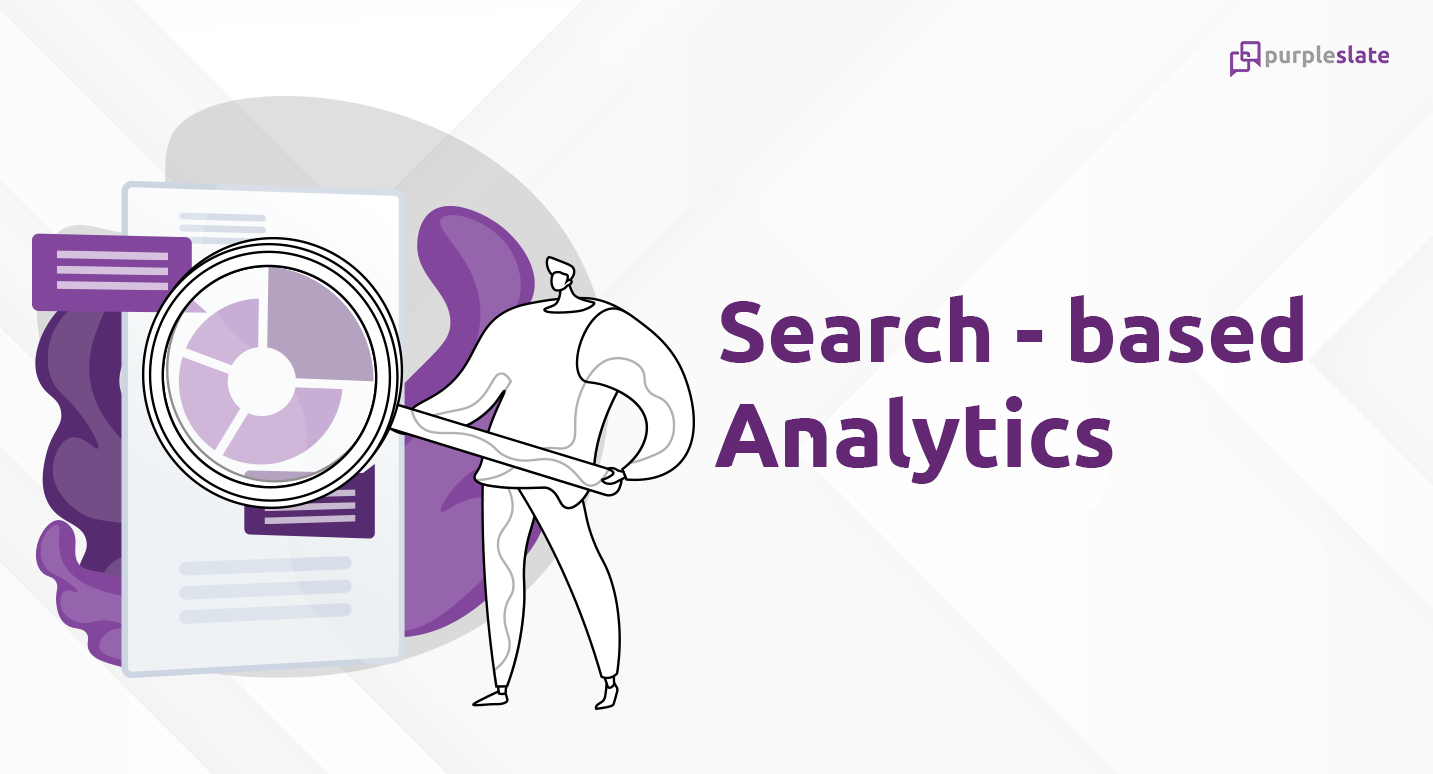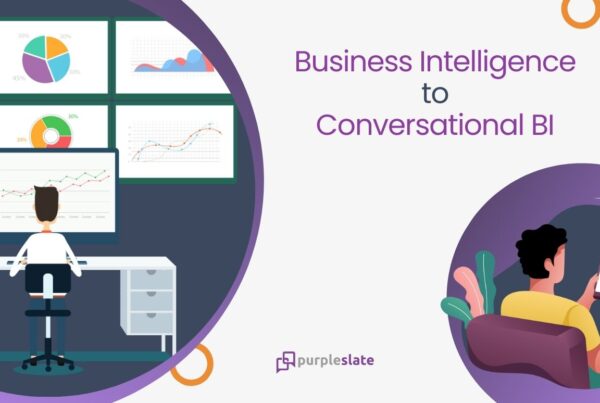
Introduction
Have you heard about AltaVista, Lycos or Excite? Those are the names of the search engines that existed before Google came with up just a single text box search page that revolutionized the internet. Google search engine is celebrating its 25th anniversary as this blog is written and it has changed the world order like never before.
How is that anyway relevant to search-based analytics? What is search-based analytics? We are now in the Alta Vista days or AskJeeves days of Analytics, very primitive. With the advent of search-based analytics, it would be another breakthrough like google search.
People have got so used to search engines that now irrespective of their business, every app and website has a mandatory search feature as part of it. No one has the time or patience to browse through the menu or icons.
The same behavior extends to the organization’s dashboard or the long reports listed by the Analytics team. But again no one is patient enough to look into the reports for the information that they are looking for. They are used to search engines and they want something similar to it in their workplace too. Give what the customer wants is a time-tested marketing strategy. The same extends to internal users of the organization.
Leave alone the dashboards, even developing and implementing a report is not an easy task. It requires a minimum of two weeks to a month to be production ready. It is both time-consuming and has a dependency on the IT team. But with an ever-changing marketplace and ecosystem, the reports become obsolete even before they are ready. The need is to have instant or dynamic reports. How to bridge the gap? It is neither possible to have an oversized IT team nor to train all the employees to become tech savvy. The answer is search-based analytics.
Search-driven analytics is a capability in business intelligence and analytics systems that allows the user to enter a question into a search bar and get answers in the form of visualizations or natural language. Users ask new questions that are not covered in a dashboard or report that has been prepared for them; this method of ad hoc inquiry and analysis is effective.
Search-based analytics tools, sometimes referred to as BI Search, makes it simple for anyone to ask questions from their business data to get analytical insights.
Why should you choose search-based analytics?
Legacy dashboards are outdated and out of context immediately. Most crucially, they only provide answers to the queries you can think of and are backwards-looking. They aren’t scalable, explorable, or useful for running business trials or testing various hypotheses.
Every decision-maker and support staff member in an organization needs to have data intelligence to attain full “data literacy.” But search-based analytics tools are the most basic requirement to remain agile and make informed decisions quickly.
How does search-based analytics tools work?
The superpowers of search-based analytics include translating user questions, comprehending their context, and offering the most suitable solutions. It is not as simple as it looks as it goes through a series of processes to get the required result.
A user types a business query into a search box, and a combination of natural language processing, language dictionaries, and other techniques is used to tokenize the question. Then processes like sentence completion, context normalization, and ambiguity correction are performed. After that, the tokens are used to generate a SQL query that is logically full, optimized, and syntactically compatible which is then given to the data store to be executed.
A post-processing sequence is performed to the response record set to summarize, rank, and serve additional needs. A series of clarifications are then given to handle the complexity and context of the user’s query.
The platform must be able to produce pertinent charts, data tables, and summary text utilizing natural language generation methods as we approach closer to delivering the results back to the user. The charts and data tables may need to be rendered very differently based on the device layout where the user began their queries, such as a desktop, tablet, or mobile device.
Search-based analytics tools are at least 8 to 10 times more complex than consumer search engines.
Where search-based Analytics is used?
It is akin to asking where we use google search. It can be used in any vertical and by anyone who needs answers from the data available in the data store of the organization. Any person, any department who has a query to ask about the organization’s data store would be the right answer.
Few examples of search-based queries.
- What drove customer churn last month?
- Compare revenue between iPhone and Samsung in Chennai
- Why did operational cost increase last year?
- What are the top five states with the highest subscriber growth last year?
- Tell me more about credit and debit by Chennai city branches
- What is my top three product offers accepted by Indian customers?
- List out all patients that were admitted with covid in the last month.
- Why did the use of laser surgery cases increase year over year?
With Natural Language processing data output can be massaged for
Aggregation and Group by
- Filters
- Top/Bottom
- Time periods
- Comparisons
- Trends
- “Why” analysis
Benefits of search-based analytics
For decades, the adoption of business intelligence tools has hovered in the range of 20-30% of users in an organization. All users can now access data analytics thanks to search analytics. Gartner expects the adoption of analytics to jump from 35% to 50% of organizations in the next few years. Business Intelligence systems were used only by CXOs and strategists and not tapping their full potential.
But opening the gates of Business Intelligence to the middle and senior management team or whoever is part of the decision-making, will lead to a manifold increase in the company’s revenue. AI-augmented search analytics enables business users to find information on the go. Ad hoc queries can be resolved quickly by BI teams, taking only a few seconds as opposed to days or weeks.
Improved ROI: Enables business users with actionable insights and allows them to uncover business issues even before they occur.
Higher user adoption: a straightforward browser-based interface that enables even all users in the organization to use tools with basic training.
Data democratization: Access and understand data without analytical, statistical, or data-handling skills.
Improved decision-making: A search-driven analytics platform allows users to dive deeper, discover AI/ML-powered insights, and find the most granular information by allowing them to explore data in any direction.
Users can find or get the expected insights at the right time by using intelligent search, actionable recommendations, and interactive stories. Instantly assist everyone in making better and faster decisions!
Future of Search-based Analytics
Search-based analytics tools are relatively new text analysis concepts with a long way to go. The future of advanced search analytics platforms has enormous potential since technology holds the key to unlocking what’s on people’s minds and we can’t even imagine right now.
To stay competitive and respond to market pressures and opportunities, today’s businesses can’t wait and need to access insights fast. They cannot tolerate delays or backlogs.
A truly self-service platform allows users to dive into any dataset they want, model and manipulate it however they want, and ultimately extract the insights that matter.
A system powerful enough to provide this has to be driven by best-in-class technology. They need to create better, more accurate ways to find what their users are looking for, without anticipating that they will understand technical terms and insider jargon.




